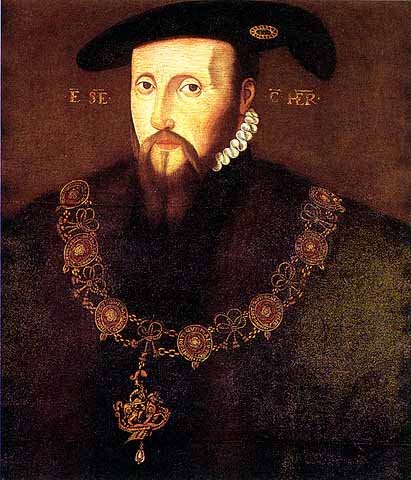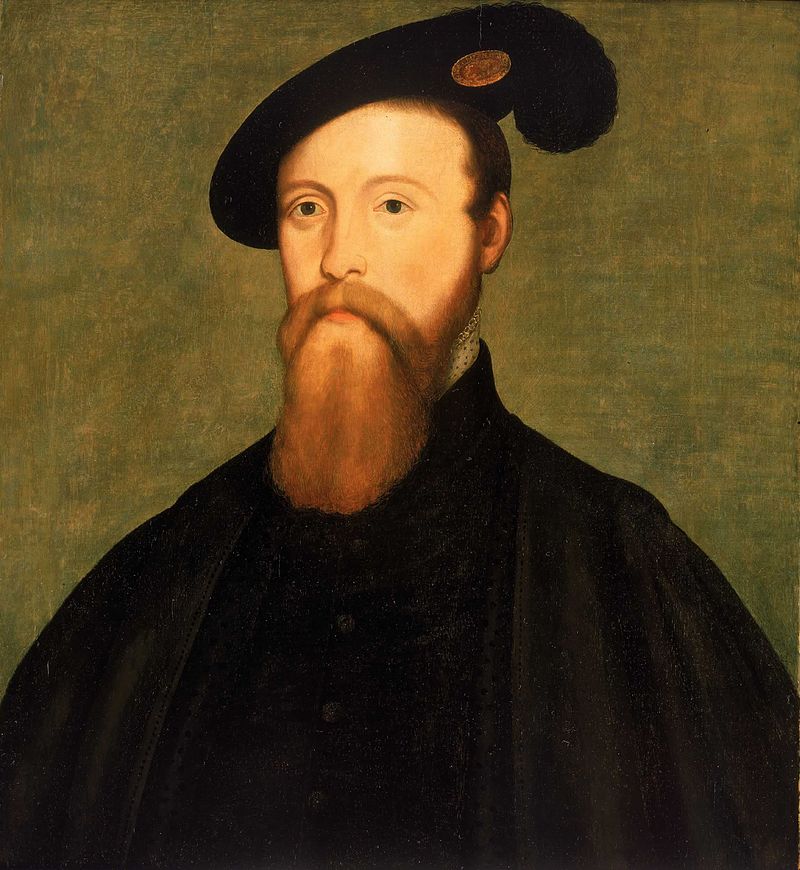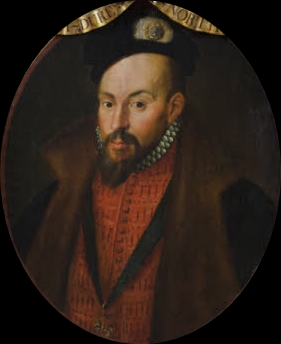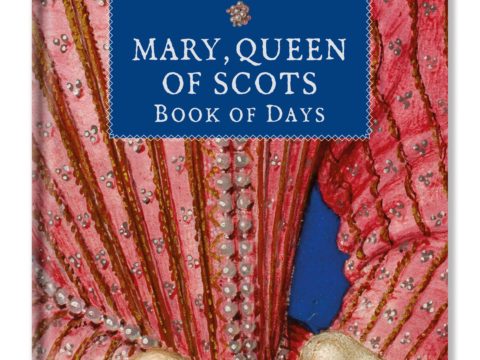Edward VI
Heir to the Throne
Edward’s birth at Hampton Court on 12th October 1537 marked the end of twenty-six years of waiting since Henry VIII’s first legitimate son had been born and died within a few weeks. Henry had turned the English world upside down for the chance of a son and from the beginning of his life there was enormous pressure on Edward (named for the saint on whose feast day he had been born) to live up to his father’s expectations.
Fortunately Edward does not seem to have had any difficulty in being a model child. He was healthy – a situation that Henry was eager to maintain through a careful regime of hygiene and country living. According to his Lady Governess, Margaret Bryan, he was as full of ‘pretty tricks’ as any child she had ever known, as well as being of a sweet nature – although she is likely to have looked on the positive side.
He spent most of his childhood in the nursery palaces of Hertford and Hatfield, often sharing quarters with his half-sister, Elizabeth.
Edward’s mother, Jane Seymour, died within a fortnight of his birth, and in his early childhood, the closest he came to experiencing mother love, other than from Lady Bryan, was the affection of his older half-sister, Mary, who was a frequent visitor.
When he was two, Henry presented him with a step-mother, Anne of Cleves, but her marriage was annulled within six months and her successor, Katheryn Howard, can have made little impression on Edward. She was arrested just after his fourth birthday, when he was at Hertford Castle, and executed in the following February.
In July 1543, a third step-mother appeared, to whom Edward became sincerely attached. Katherine Parr, whom he addressed as his mother, seems to have reciprocated his affection.
Edward’s letters of the early 1540s express an affectionate nature. He wrote to his sister Mary, that, although he did not write to her often, it was not because he did not love her, rather, he likened it to not wearing his best coat every day, although he loved it the most.
His letters suggest he was in awe of his father, not daring to write directly to him very often, preferring to send his respects via Queen Katherine.
Katherine seems to have had a profound effect on Edward’s formal education which began when he was six. He was trained in a highly academic curriculum which was designed to fit him for kingship – languages, philosophy, history, mathematics and music were at the core. There is a letter in which he thanked his father for allowing him to learn music from the Flemish master, Philip Van Wylder.
It is hard to believe that Katherine chose his tutors with no input from the King and perhaps during Henry’s lifetime they appeared to be impeccably orthodox, but it later became apparent that they strongly favoured the Reformed faith which Katherine began to support, covertly, during Henry’s last years.
Whilst the term ‘Protestant’ was not yet widely used, it was during the 1540s that the divisions within the Church began to harden. During the previous two decades, evangelicals generally saw themselves as wishing to reform the Church from within and the main area of contention was on the doctrine of ‘Justification by Faith Alone’ which was not necessarily a doctrine that the Catholic Church absolutely rejected.
By the 1540s, the ground of contention had moved to the doctrine of transubstantiation, and this was a matter on which there could be no compromise. Edward, whether by the teachings of his tutors, the influence of Katherine, or his own readings, was to become a firm adherent of Protestantism.
Towards the end of 1546, Henry tinkered with his will. Edward was his heir under common law, and needed no recognition by statute. The Act of Succession of 1544 had provided that, in the event of Edward’s death without children, his half-sisters would succeed, followed by the children of his cousin, Frances, Marchioness of Dorset.
Realising that he could not survive until Edward reached his majority, Henry arranged for a Regency Council, in which no individual was to hold more sway than the rest. Included in the Council were Edward’s maternal uncle, Edward Seymour, Earl of Hertford, and John Dudley, Viscount Lisle. Both were experienced soldiers and high in the King's favour. Henry Grey, Marquess of Dorset, Hertford’s younger brother, Thomas, and Stephen Gardiner, Bishop of Winchester, were all deliberately excluded for a variety of reasons.
Somerset's Regency
Henry died on 28th January, and, in what might be termed a palace coup, Hertford, aided by Sir William Paget, swiftly took control of the Council, taking the position of Lord Protector. In order to sweeten the deal for the rest of the Councillors there was a liberal sharing out of titles and lands. Hertford became Duke of Somerset, Lisle became Earl of Warwick and Queen Dowager Katherine’s brother, William Parr, became Marquess of Northampton.

Edward, not long past his tenth birthday, was crowned in a ceremony curtailed to fit his youth. The young King continued his education, which now took on a strongly Protestant flavour. The candles and statues that had graced his private altar were banished and Cranmer began work on fundamental changes to church doctrine, to be embodied in the two Books of Common Prayer, that of 1549 and the more radical version of 1552.
Success breeds envy, and quarrels began within the Council. Thomas Seymour, angry at the sudden elevation of his brother, bolstered his position by marrying Queen Katherine, and tried to inveigle his way into the King's heart through secret messages and liberal tips. Soon, the brothers were at daggers drawn, not helped by the personality clash between Queen Katherine and the Duchess of Somerset.

In the autumn of 1547, the English army defeated the Scots at the Battle of Pinkie Cleugh, but Somerset did not have the money or manpower to follow up the victory and subjugate Scotland. The English plan was to create a union of the crowns through a marriage between Edward and the infant Mary, Queen of Scots, his first cousin once removed. Whilst there was a strong pro-English lobby in Scotland as Protestantism began to spread, the majority still favoured a French alliance and Queen Mary was whisked away to the French court to marry the Dauphin.
In September 1548, Edward’s stepmother, Katherine Parr, died, but although they had once been close, following the deterioration in relationships between the Seymour brothers, the King saw little of her. There is no record of his reaction to her death. Seven months later his younger uncle also died, but this time under the axe, rather than from natural causes. Thomas Seymour was accused of a number of crimes including piracy, and hoping to marry Edward’s half-sister, Elizabeth. Somerset signed the death warrant.
Henry VIII’s last campaign in France had resulted in the capture of Boulogne, but England did not have sufficient money or men to hold it. Eventually, in the end the Treaty of Boulogne of 1550, it was agreed that the city would be returned to the French, and that Edward would, in due course, marry Princess Elisabeth of France. The following year, the Treaty of Norham eventually ended the war with Scotland.
Soon the Duke had his own troubles. The economy was in a poor state – enclosure of land in a time of growing population, high inflation and an unstable currency and the dislocation of society as Cranmer’s reforms swept away centuries of tradition, caused unrest. Two major rebellions broke out, one in the West, the Prayer Book rebellion, which sought to restore the old ways, and one in the east, Kett’s rebellion which was driven by economic woes.
Somerset, although a fine soldier, was a poor leader. He had personal sympathy with the poor, and attempted to control the rapacity of his fellow nobles but not with any consistency or fortitude. Although both rebellions were put down, he was fatally weakened.
The Rise of Northumberland
Dudley, Earl of Warwick, now came to the fore, and eventually eclipsed Somerset. Edward seems to have liked and admired Warwick, who was soon promoted to the rank of Duke of Northumberland. He treated the king more deferentially than Somerset had done and as Edward entered adolescence involved him more, at least nominally, in government. Somerset tried to regain power, but failed, and was executed in 1552.

As the government’s religious policies became more radically Protestant, the relationship between Edward and his half-sister and heir, the Lady Mary, became strained. Mary insisted that she would not accept the Protestant prayer book, and her cousin, Emperor Charles V, made it clear that he would not tolerate her being forced into submission. Edward’s government was in no financial or military position to resist the Emperor, and tacit acceptance was given to Mary continuing to hear the old Mass.
As Edward matured, he became increasingly certain that, in religious matters, he should be obeyed as Supreme Head of the Church, as his father had been. Relationships between the siblings deteriorated, with them both being reduced to tears in one encounter. Edward became more forceful, rejecting his Council’s view that Mary’s disobedience should be overlooked, but he was not yet of age, and was obliged to accept being overruled.
In early 1553, the King’s health declined. Although it has often been suggested that Edward was a sickly child, there is no real evidence of weakness until this time. He wrote in his journal that he had had both measles and small-pox at the same time – enough to weaken the stoutest constitution! His thoughts turned towards what might happen in the event of his death, and he drew up a will. It has been argued that the will began as a mere schoolroom exercise, that was later adapted, and also that it was the brainchild of Northumberland, who persuaded Edward to think it his own idea.
Whatever the genesis of it, the result was, first, a will that could not be enforced, because it left the crown to the male heirs, first of his cousin Frances, Marchioness of Dorset, then the male heirs of her three daughters, none of whom were married, and the oldest, Lady Jane Grey, only just of marriageable age. The two eldest daughters were swiftly married to Northumberland’s son, and to the son of the Earl of Pembroke.
As it became clear to Edward that his own death was imminent, he changed the draft will to leave the throne to Lady Jane Grey and her heirs male. With all the temper and tenacity of his father, he insisted that his Privy Councillors and the Lord Chief Justice affirm the will and the Letters Patent he issued to give it effect, despite their concerns over its legality (Edward was a minor, and it was questionable that the king’s will, or Letters Patent could overturn an Act of Parliament.)
Over the spring and early summer of 1553, Edward’s health worsened and he died on 6th July. The exact cause is uncertain – septicaemia, tuberculosis, pneumonia and arsenical poisoning (either deliberate or as a result of medical treatment) have all been suggested.
Although Edward’s reign had been short, the extensive ecclesiastical changes introduced were hard to undo: in particular, the 1547 Chantries Act, which prohibited prayers for the dead, and suppressed chantries, changed the nature of religious ritual as the wave of iconoclasm that followed it, whitewashing the churches and smashing the stained glass, changed the face of English churches.
Edward was buried in Westminster Abbey on 8th August, in a Protestant service conducted by Archbishop Cranmer.






